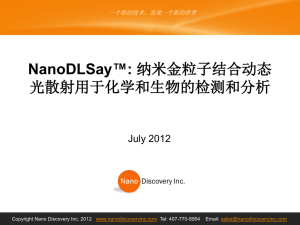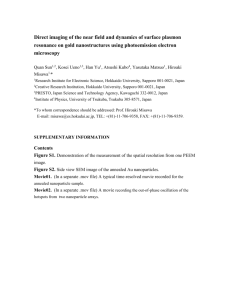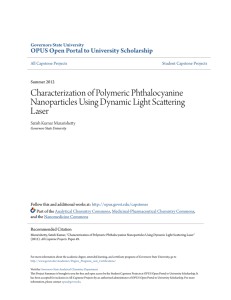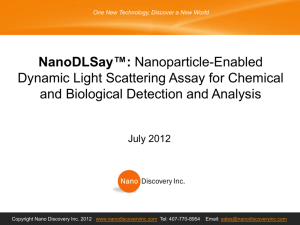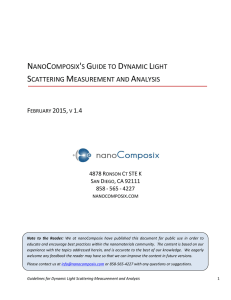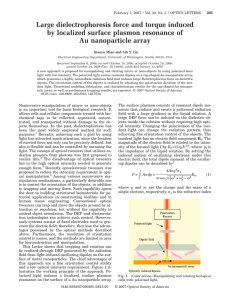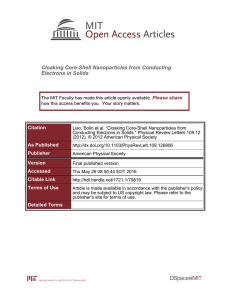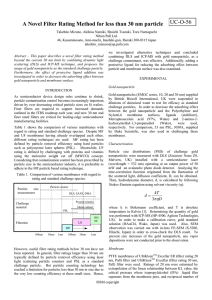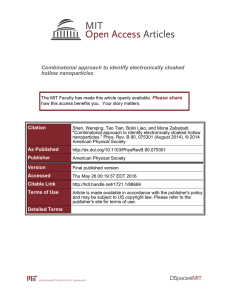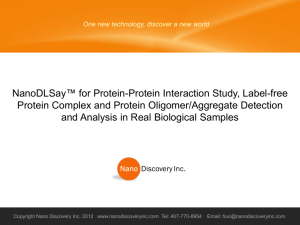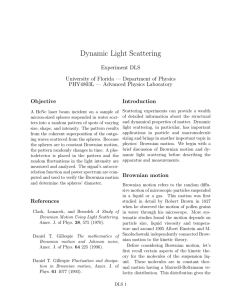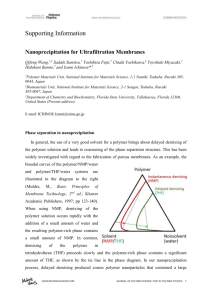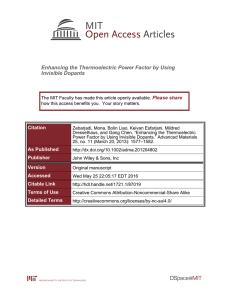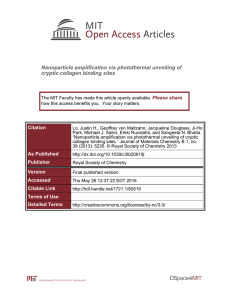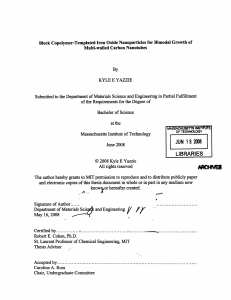Jaganathan et al. Supporting Text S1: Details of Dynamic Light
advertisement
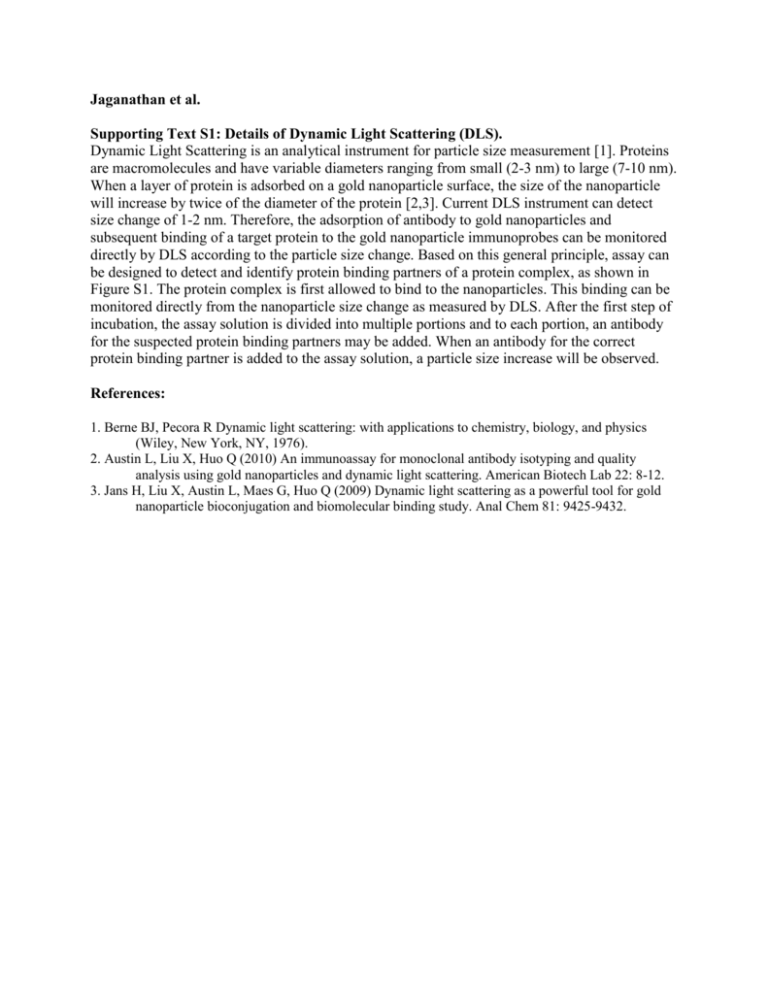
Jaganathan et al. Supporting Text S1: Details of Dynamic Light Scattering (DLS). Dynamic Light Scattering is an analytical instrument for particle size measurement [1]. Proteins are macromolecules and have variable diameters ranging from small (2-3 nm) to large (7-10 nm). When a layer of protein is adsorbed on a gold nanoparticle surface, the size of the nanoparticle will increase by twice of the diameter of the protein [2,3]. Current DLS instrument can detect size change of 1-2 nm. Therefore, the adsorption of antibody to gold nanoparticles and subsequent binding of a target protein to the gold nanoparticle immunoprobes can be monitored directly by DLS according to the particle size change. Based on this general principle, assay can be designed to detect and identify protein binding partners of a protein complex, as shown in Figure S1. The protein complex is first allowed to bind to the nanoparticles. This binding can be monitored directly from the nanoparticle size change as measured by DLS. After the first step of incubation, the assay solution is divided into multiple portions and to each portion, an antibody for the suspected protein binding partners may be added. When an antibody for the correct protein binding partner is added to the assay solution, a particle size increase will be observed. References: 1. Berne BJ, Pecora R Dynamic light scattering: with applications to chemistry, biology, and physics (Wiley, New York, NY, 1976). 2. Austin L, Liu X, Huo Q (2010) An immunoassay for monoclonal antibody isotyping and quality analysis using gold nanoparticles and dynamic light scattering. American Biotech Lab 22: 8-12. 3. Jans H, Liu X, Austin L, Maes G, Huo Q (2009) Dynamic light scattering as a powerful tool for gold nanoparticle bioconjugation and biomolecular binding study. Anal Chem 81: 9425-9432.

